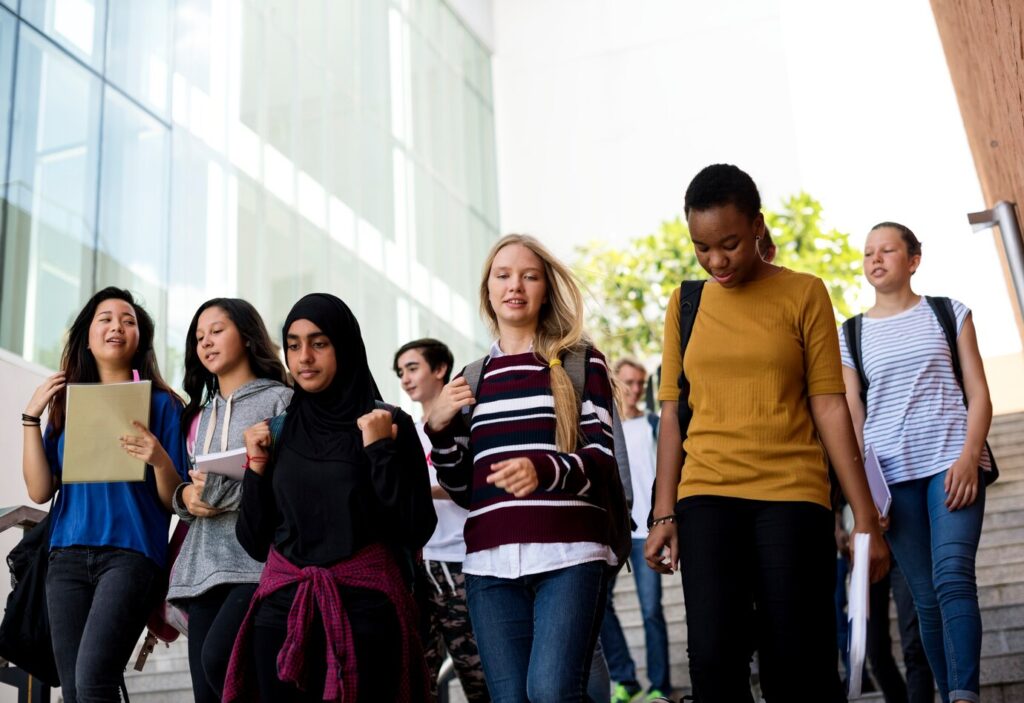Canada’s New Policy: How the Ban on Border Applications Affects International Students’ Work Permits

Canada has long been a beacon for international students, with over 1 million students choosing the country in 2023—a remarkable 29% increase from 2022. The nation’s exceptional education system and promising post-graduation work opportunities have solidified its status as a top destination. However, a recent policy change could introduce significant challenges for students and impact the Canadian labor market. Canada New Policy Affects International Students’ Work Permits
Understanding the New Policy Change
Canada has decided to end the practice known as ‘flag poling,’ where international students apply for post-graduation work permits (PGWPs) at border crossings. This policy shift aims to streamline immigration procedures but also brings about new hurdles. Previously, Flag poling allowed students to quickly and conveniently obtain their work permits by visiting a border crossing, often completing the process within a day. Canada New Policy Affects International Students’ Work Permits
With the elimination of flag poling, students must now follow the traditional, often slower, application process with Immigration, Refugees, and Citizenship Canada (IRCC). This change could result in delays in obtaining work permits, thereby affecting students’ ability to commence their jobs immediately after graduation. Canada New Policy

The Impact of Flag poling on Immigration
From March 2023 to February 2024, approximately one-fifth of PGWP applicants utilized flagpoling to expedite their permits. This method was popular because it enabled face-to-face interactions with immigration officers, which often resolved application issues promptly. However, this practice also strained border resources, diverting officers from their primary duties of ensuring security and managing the movement of goods and travelers.
Post-Study Work Permit Policies Around the World
When compared to other major study destinations, Canada’s new approach stands out. In the United States, the Optional Practical Training (OPT) program allows international students to work for up to three years in their field of study after graduation. The UK has reintroduced a two-year post-study work visa, and Australia offers a Temporary Graduate visa. These countries have streamlined their processes to retain international talent, recognizing the economic benefits these graduates bring. Canada’s new policy could be seen as a step backward in this context.
Canada’s Post-Graduation Work Permit Program
Canada has historically made significant efforts to facilitate the stay and employment of international students after graduation. The PGWP program, designed to allow graduates to gain valuable Canadian work experience, has been a landmark policy in attracting global talent. Over the years, the program has evolved to better accommodate the growing number of international students, with continuous improvements in application processes and timelines to enhance efficiency.
In recent years, the demand for PGWPs has surged, reflecting the increasing number of international students choosing Canada for its educational and career opportunities. From March 2023 to February 2024, PGWP applicants made up about one-fifth of all flag poling cases. This underscores the reliance on flag poling as a quick solution, which the recent policy change seeks to address by improving in-country application processes and reducing wait times.
Adapting to the New Reality: What Students Should Do Now
Canada’s appeal has been bolstered by its relatively straightforward path to permanent residency. The PGWP program is a key part of this, allowing graduates to gain valuable Canadian work experience. In 2023, the number of international students in Canada surged, driven by the country’s accessible pathways to work and residency. The new policy could dampen this growth by introducing uncertainty and delays into the post-graduation phase.
For international students, the transition from education to employment is crucial. Delays in this process can lead to financial stress and missed job opportunities. The end of flagpoling means longer wait times for work permits, potentially disrupting plans to begin working right after graduation. This could make Canada less attractive as a study destination, affecting its competitiveness in the global education market.
Preparing for a Seamless Transition
International students must adapt by preparing well in advance for the post-graduation phase. Starting early in their educational journey, students can take proactive steps to ensure a seamless transition to the workforce, despite potential delays in obtaining work permits. Here are some strategies:
Engage in Career Counseling Services:
Utilize career counseling services offered by educational institutions to gain insights into the job market and available opportunities.
Attend Job Fairs:
Participate in job fairs and networking events to connect with potential employers and learn about job openings.
Connect with Potential Employers:
Establish relationships with potential employers during your studies to increase your chances of securing a job after graduation.

Maintain Updated Documentation:
Ensure all your documentation is up to date and ready for submission when applying for work permits.
Monitor Policy Updates:
Stay informed about any policy changes or updates from Immigration, Refugees, and Citizenship Canada (IRCC) to avoid unforeseen complications.
By taking these steps, international students can navigate the new policy landscape and continue to benefit from the opportunities that Canada has to offer.
FAQs about Canada’s New Policy on Post-Graduation Work Permits
What is flag poling in the context of Canadian immigration?
Flag Poling refers to the practice where international students apply for post-graduation work permits (PGWPs) at border crossings, often completing the process within a day.
Why has Canada banned flag poling for PGWPs?
The Canadian government has ended flag poling to streamline immigration procedures and reduce the strain on border resources, ensuring that border officers can focus on their primary duties.
How will the end of Flag poling affect international students?
Students will now have to apply for PGWPs through the traditional, often slower, application process with Immigration, Refugees, and Citizenship Canada (IRCC), potentially leading to delays in starting their jobs after graduation.
What are the alternatives to flag poling for obtaining a PGWP?
Students must now apply for PGWPs through the IRCC’s standard application process, which involves submitting an online or paper application from within Canada.
How long does the traditional PGWP application process take?
The processing time for PGWP applications can vary, but it generally takes several weeks to a few months, depending on the volume of applications and the completeness of the submitted documents.
Can international students work while their PGWP application is being processed?
Yes, international students who apply for a PGWP before their study permit expires can continue to work full-time while waiting for a decision on their application.
What steps can students take to prepare for the new PGWP application process?
Students should start the application process early, ensure all documentation is complete, and stay updated on any policy changes from the IRCC. Engaging in career counseling and networking with potential employers can also help.
How does Canada’s PGWP program compare to other countries’ post-study work policies?
The US offers the Optional Practical Training (OPT) program, allowing graduates to work for up to three years. The UK has a two-year post-study work visa, and Australia offers a Temporary Graduate visa. These programs are generally more streamlined compared to Canada’s new approach.
Will the new policy impact Canada’s attractiveness to international students?
The policy could make Canada less attractive due to potential delays in obtaining work permits, which may affect students’ ability to start their jobs immediately after graduation.
What are the benefits of Canada’s PGWP program?
The PGWP program allows graduates to gain valuable Canadian work experience, which can be a significant advantage when applying for permanent residency.
What should students do if they face delays in receiving their PGWP?
Students should stay in close contact with the IRCC, keep all documentation updated, and consider reaching out to their educational institution for support and guidance during the transition period.
Can students apply for permanent residency while holding a PGWP?
Yes, gaining work experience through a PGWP can help students qualify for various permanent residency programs, such as the Canadian Experience Class under the Express Entry system.
What impact will the new policy have on the Canadian labor market?
Delays in obtaining work permits could lead to a temporary shortage of skilled workers in certain industries, affecting both students and employers.
Are there any exceptions to the new PGWP application rules?
Currently, all international students must follow the new application process. However, students should regularly check the IRCC website for any updates or changes to the policy.
How can students stay informed about changes in immigration policies?
Students should regularly visit the IRCC website, subscribe to immigration newsletters, and stay in touch with their educational institution’s international student office for the latest updates and guidance.
Conclusion: Canada’s decision to end the practice of flag poling for post-graduation work permits marks a significant shift in its immigration policy. While this change aims to streamline the immigration process, it introduces new challenges for international students, potentially delaying their transition from education to employment. This could impact Canada’s attractiveness as a study destination, as timely access to work opportunities is crucial for students planning their careers post-graduation.
However, international students can navigate these changes by preparing well in advance. Engaging in career counseling, attending job fairs, networking with potential employers, and staying updated on immigration policies are essential steps. For more information contact us now.

Disclaimer:
This article is based on information from various sources and reflects the author’s understanding of the recent policy changes.
Source: www.financialexpress.com
- The Rise and Challenges of Canada’s Temporary Foreign Worker Program
- Comprehensive Guide to Canada’s Express Entry Draw Results and the Provincial Nominee Program
- How has the Canada Citizenship Scheme changed over the years?
- What are some reliable sources for studying the official study guide, “Discover Canada”?
Also read:
- Portugal Tourist Visa: Your Ultimate Guide to Visiting Portugal
- Study in the UK Without IELTS – Secure Your Visa Even After a 5-Year Study Gap!
- Rs 8,000 Crore Loss Due to Canada’s Foreign Student Cap – What It Means for Indian Colleges and Students”
- ✨ Dreaming of Visiting the UK Without Travel History? Here’s How You Can Make It a Reality!
- Indian IT Firms Brace for Major H-1B Visa Overhaul: How Will It Impact the Industry?






